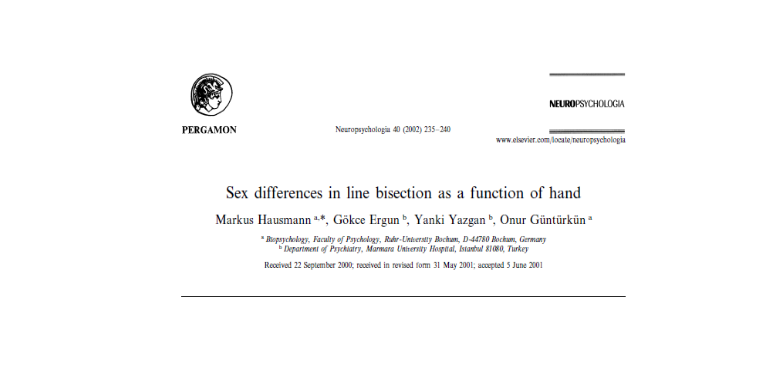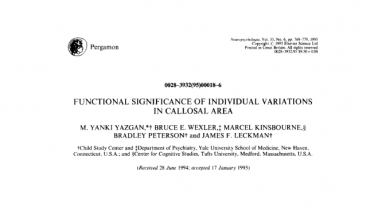Abstract
If subjects are asked to indicate the midpoint of a horizontal line, they tend to bisect it left of the center, a phenomenon called ‘pseudoneglect’. Assuming that this task evokes visuospatial processes, the left bias is generally considered to arise from a right-hemispheric activation. Numerous factors affect pseudoneglect. Although, only few studies have examined the influence of sex in visual line bisection, most of theses studies reported no significant main effect of sex. Possible interactions between sex and other performance factors that are linked to the motor component of this task, e.g. hand use, are rarely examined. We studied the interaction of these two variables using right-handed females and males in a line bisection task. The results clearly indicate that hand use and sex interact, with females showing the left bias to a similar extent with both hands while males show the bias predominantly with the left hand. Moreover, the position of the lines (left, middle and right) significantly affect left bias in visual line bisection and interact with hand use. It is hypothesized that the larger cross-section of the posterior corpus callosum in females enables a stronger interhemispheric connectivity of visuospatial cortical areas resulting in a strong left-sided bias in hand motor cortical areas of both hemispheres. In males, motor cortical activation would accordingly be mainly restricted to the right hemisphere.
Keywords: Pseudoneglect; Gender; Lateralization; Functional cerebral asymmetry; Corpus callosum


